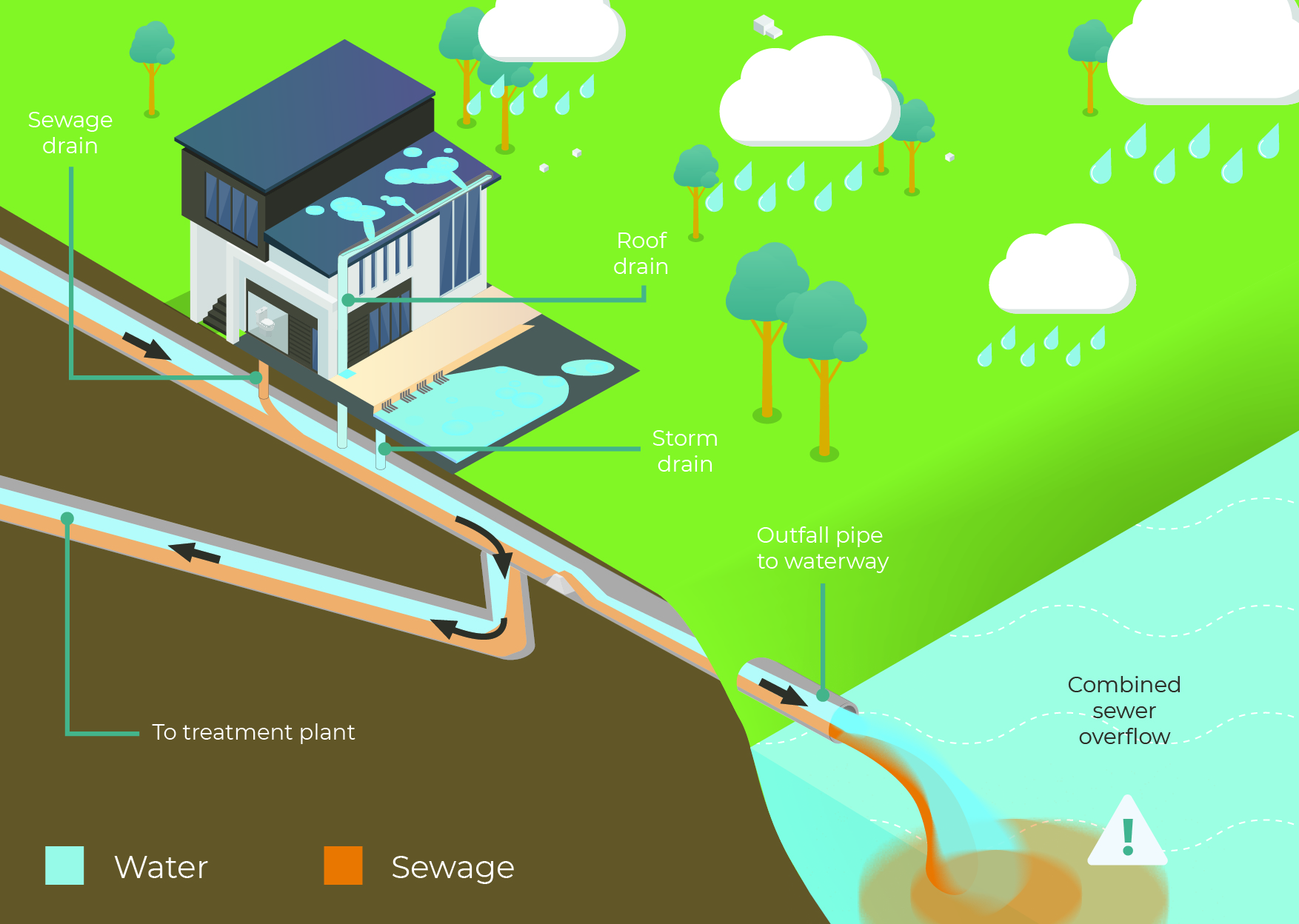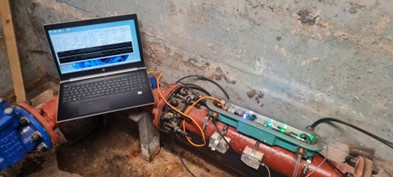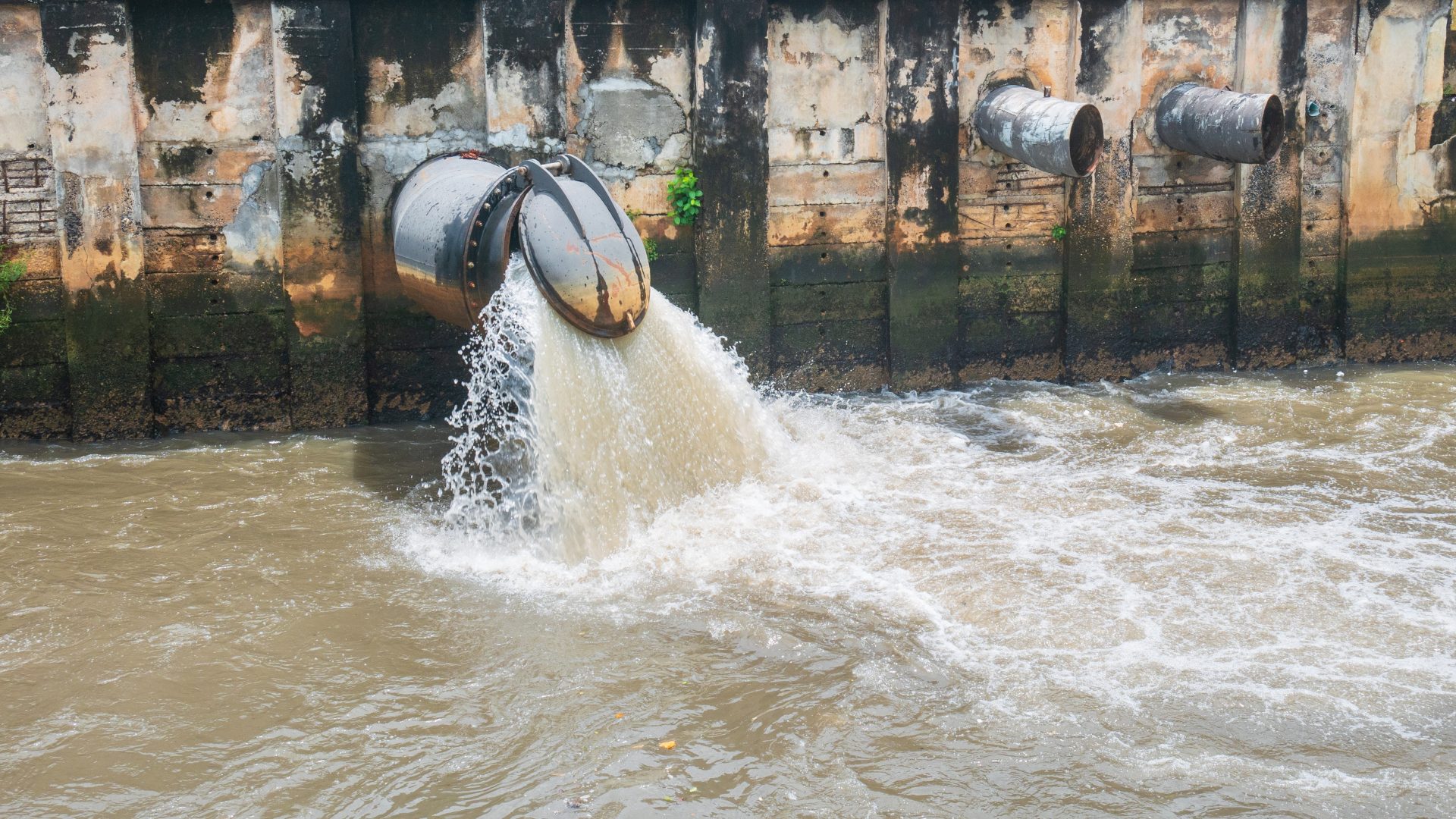
In countries operating a combined sewage system, there’s typically a pipeline network of sewers spanning thousands of kilometres. These pipelines are designed to transport wastewater from homes and businesses and stormwater from roads and buildings to sewage treatment works.
During heavy rainfall events large volumes of stormwater enter the combined sewers, which can lead to them becoming inundated as the volume entering the combined sewer network exceeds downstream wastewater treatment plants’ design capacity.
In the past, combined sewer pipe contents backed up the pipeline, spilling into people’s homes and office buildings, roads and open areas. Combined sewer overflows (CSOs) were developed to prevent this by diverting some water to avoid exceeding the downstream wastewater treatment plant and storm tank storage capacity, depositing it into local water courses. However, if wastewater treatment plants and CSOs aren’t appropriately maintained or upgraded, CSOs can become prone to activating too early, causing pollution events, fines for the utility and damaging customer relationships.

Rising sewer mains are pressurized pipelines carrying sewage uphill and are a notorious weak point in the wastewater network. They have a high rate of bursts and are often located near natural water resources and so can lead to damaging pollution incidents.
In the context of the UK wastewater network, below are some example contributory factors behind rising sewer mains failure and CSOs spilling prematurely.
Aging assets
Historically, England’s combined sewerage system was developed during the Victorian period, and whilst most of the wastewater pipeline networks and wastewater treatment plants are considerably newer, much of the infrastructure is aging. Significant progress needs to be made to monitor the wastewater network to prevent CSOs from activating prematurely and rising sewer mains bursting.
Extreme weather events
UK annual rainfall has increased in recent decades in tandem with the escalating climate crisis. Additionally, rainfall events are becoming more extreme in their nature, with an increase in rainfall intensity being experienced. This has put a strain on combined sewerage infrastructure because rainwater flows through the same pipeline as sewage.
Overpopulation
The UK’s population is growing and is projected to total 70 million in 2026. Utilities failing to account for population increase will have sewage treatment works and pipelines frequently exceeding their design capacity, putting additional stress on those assets.
Sewage treatment works flow issues
Growing populations and an increase in rainfall entering sewers mean larger volumes of diluted wastewater now travel through pipelines, with some sewage treatment plants design capacity being exceeded, often resulting in CSOs spilling prematurely.
The solution: early leak detection
Crucial in ensuring the performance of wastewater networks is the early monitoring of rising sewer mains. These are notoriously weak areas in the wastewater network and leak or burst events can cause severe environmental incidents, just like poorly managed CSOs.
Case study: single ended leak detection for rising sewer mains
A UK utility had an opportunity to adopt a more proactive maintenance approach to its rising sewer mains.
Atmos developed a pipeline leak detection solution that immediately identifies bursts in the rising sewer main, overcoming the typical process connection restrictions usually at the top of rising sewer mains by deploying a single ended leak detection approach.
Another solution Atmos developed was a pipeline inspection device that performs a high resolution acoustic and magnetometry survey of the pipeline, used to identify existing small leaks and sections of pipeline that might be prone to burst.

Since installing the instrumentation, our sensing technology built a profile of the utility’s pipeline condition, providing crucial diagnostics for a rising sewer main where the risk of burst rates is high.
New leaks were detected using single ended negative pressure wave data and a novel approach to measuring flow using pump vibration data meant leak sizes could also be estimated, allowing the water utility to differentiate between lower and higher priority leak events.
Relieve rising sewer mains with early pipeline leak detection
Leaks and bursts in rising sewer mains have the potential to cause significant environmental, financial and reputational damage, but leak detection can provide an early pipeline monitoring solution.
Learn more about how Atmos supports the water industry by visiting them at Booth D14 at WWEM 2024 or by visiting their site.



